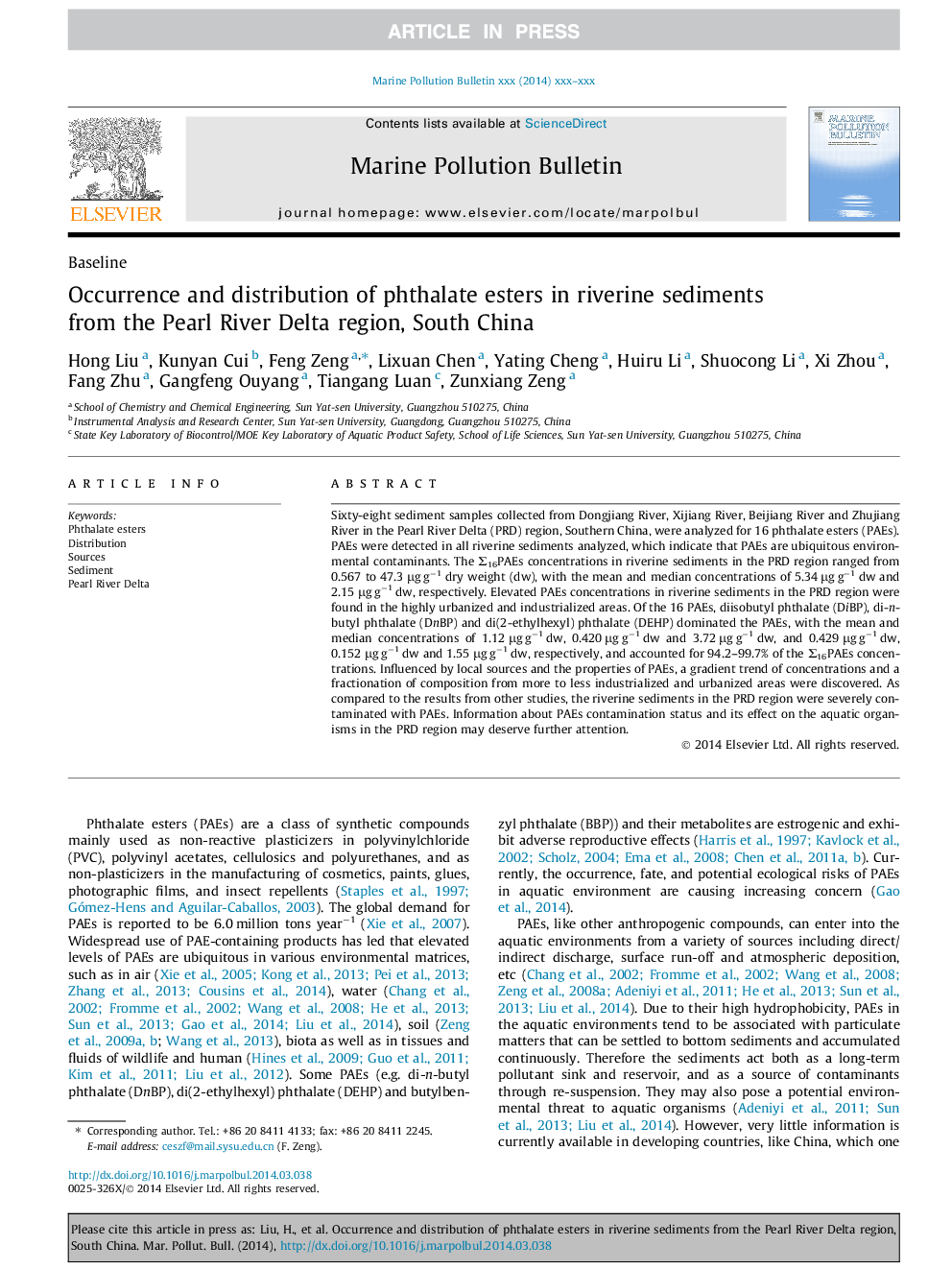| Article ID | Journal | Published Year | Pages | File Type |
|---|---|---|---|---|
| 6358830 | Marine Pollution Bulletin | 2014 | 8 Pages |
Abstract
Sixty-eight sediment samples collected from Dongjiang River, Xijiang River, Beijiang River and Zhujiang River in the Pearl River Delta (PRD) region, Southern China, were analyzed for 16 phthalate esters (PAEs). PAEs were detected in all riverine sediments analyzed, which indicate that PAEs are ubiquitous environmental contaminants. The Σ16PAEs concentrations in riverine sediments in the PRD region ranged from 0.567 to 47.3 μg gâ1 dry weight (dw), with the mean and median concentrations of 5.34 μg gâ1 dw and 2.15 μg gâ1 dw, respectively. Elevated PAEs concentrations in riverine sediments in the PRD region were found in the highly urbanized and industrialized areas. Of the 16 PAEs, diisobutyl phthalate (DiBP), di-n-butyl phthalate (DnBP) and di(2-ethylhexyl) phthalate (DEHP) dominated the PAEs, with the mean and median concentrations of 1.12 μg gâ1 dw, 0.420 μg gâ1 dw and 3.72 μg gâ1 dw, and 0.429 μg gâ1 dw, 0.152 μg gâ1 dw and 1.55 μg gâ1 dw, respectively, and accounted for 94.2-99.7% of the Σ16PAEs concentrations. Influenced by local sources and the properties of PAEs, a gradient trend of concentrations and a fractionation of composition from more to less industrialized and urbanized areas were discovered. As compared to the results from other studies, the riverine sediments in the PRD region were severely contaminated with PAEs. Information about PAEs contamination status and its effect on the aquatic organisms in the PRD region may deserve further attention.
Related Topics
Physical Sciences and Engineering
Earth and Planetary Sciences
Oceanography
Authors
Hong Liu, Kunyan Cui, Feng Zeng, Lixuan Chen, Yating Cheng, Huiru Li, Shuocong Li, Xi Zhou, Fang Zhu, Gangfeng Ouyang, Tiangang Luan, Zunxiang Zeng,
